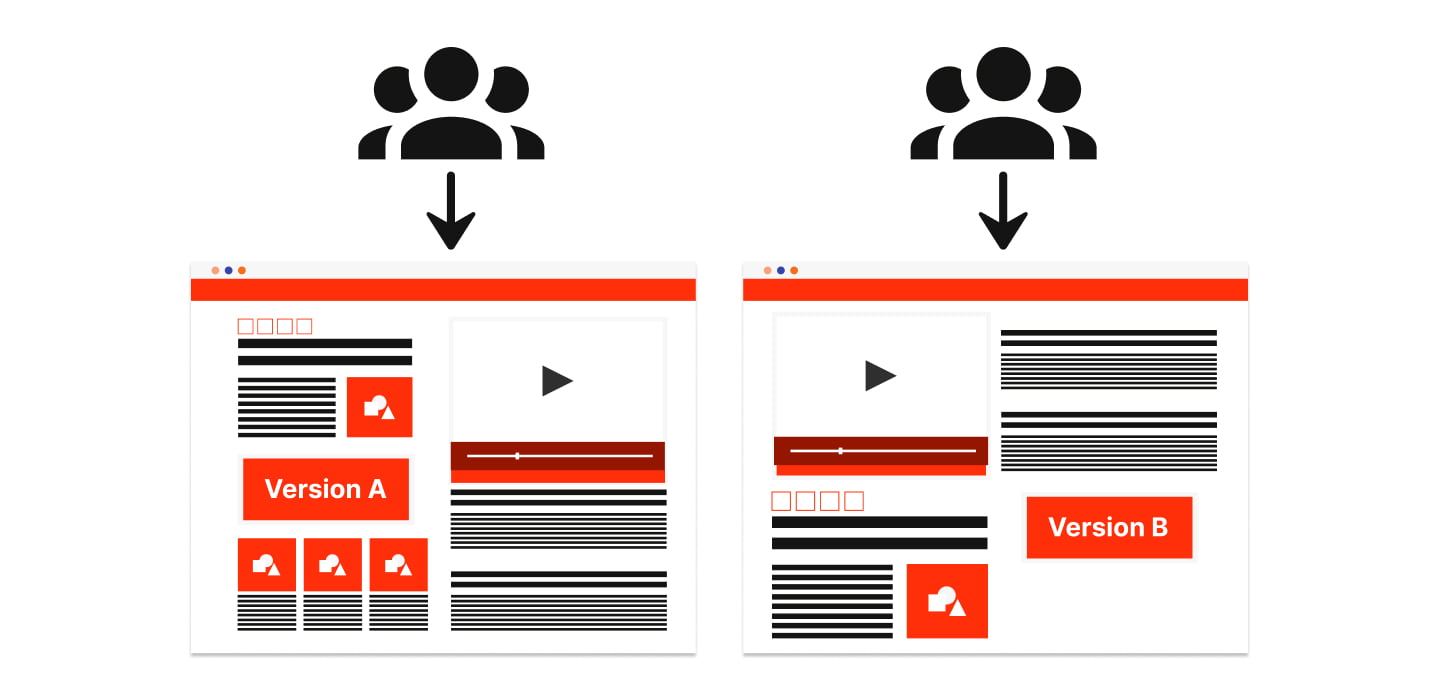Contributors
A/B testing, also known as split testing, is a method of experimentation in which a control group is shown one version of a product or website, while a test group is shown a variation of the same product or website. The goal of A/B testing is to determine which version performs better by collecting and analyzing data on user engagement, conversion rates, and other metrics. A/B tests are often used to test changes to website design, user interface, and marketing campaigns to see which variation performs better.
A/B testing is important because it allows businesses to make data-driven decisions about their products and websites. By testing different variations of a product or website, businesses can gain insight into what works and what doesn’t, and make changes that will improve user engagement and conversion rates. A/B testing also helps to eliminate the guesswork that often goes into making changes to a product or website, and allows businesses to make informed decisions based on real-world data.

Setting up an A/B test can be done using a variety of tools, such as A/B testing software or a website testing platform. The first step is to identify the two versions of the product or website that will be used in the test. Next, a sample of users is randomly divided into two groups, with one group being shown the original version of the product or website, and the other group being shown the variation. The test is then run for a pre-determined amount of time, and the results are analyzed to determine which version performs better.
There are several benefits to running an A/B test. One of the main benefits is that it allows businesses to make data-driven decisions about their products and websites. By testing different variations of a product or website, businesses can gain insight into what works and what doesn’t, and make changes that will improve user engagement and conversion rates. A/B testing also helps to eliminate the guesswork that often goes into making changes to a product or website, and allows businesses to make informed decisions based on real-world data. Furthermore, A/B testing is cost-effective, as it allows to test a hypothesis without investing too much resources.
These examples demonstrate the power of A/B testing in making small changes that can have a significant impact on user engagement and conversion rates. It is important to note that A/B testing should be an ongoing process and that businesses should be continuously testing different variations in order to optimize their website or product.
In conclusion, A/B testing is an effective method of experimentation that allows businesses to make data-driven decisions about their products and websites. By testing different variations and analyzing the data, businesses can gain insight into what works and what doesn’t, and make changes that will improve user engagement and conversion rates. A/B testing also helps to eliminate the guesswork that often goes into making changes to a product or website and it is cost-effective. It is important to run A/A testing before A/B testing to establish the control group and to be sure that any differences observed in A/B test are not due to chance. With A/B testing, businesses can make informed decisions based on real-world data and optimize their website or product for better performance.
A/B testing allows you to make data-driven decisions about how to optimize a product for maximum engagement or conversion. It can help increase engagement and conversion rates, and it is a cost-effective method to make improvements to a website or product.
An A/B test is conducted by creating two variations of a product or website, a control group and an experimental group, and randomly assigning users to one of the groups. The engagement or conversion rate is then measured and compared between the two groups to determine which variation performs better.
The result of an A/B test should show a clear winner between the two variations being tested in terms of engagement or conversion rate. However, it is important to keep in mind that the results may not always be significant or may vary based on the sample size and the metrics being measured.
Yes, A/B testing can be combined with other types of testing such as multivariate testing (MVT) or multi-page testing. This can provide more insights about how different elements on a website or product interact with one another and can provide a more comprehensive view of how the website or product is performing.